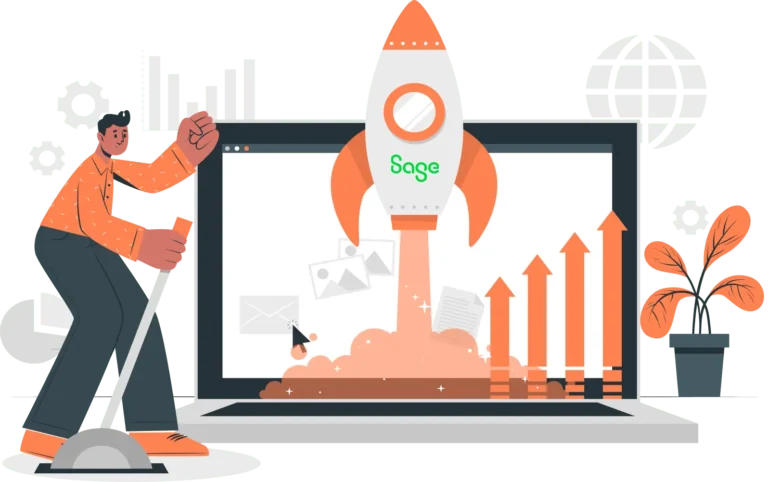- Solutions
-
-

Solutions
Perfect eCommerce solutions for any business. We provide customized solutions for B2B and B2C businesses across multiple industries.
Learn more
-
-
- Products
-
-

Products
Streamline backend operations, improve inventory management, and more with our business management software.
Learn morePLATFORM
-
-
- Services
-
-

Services
We go beyond software to provide the customizations, services, and support your business needs.
Learn more
-
-
- Industries
-
-

Industries
Business management software tailored to meet the needs of specific industries, including industry-specific regulations.
Learn moreINDUSTRIES
-
-
- Resources
-
-

Resources
Learn more about business management software and the latest developments in the industry.
Learn more
-
-

Blog / 6 Mistakes to Avoid When Integrating Your eCommerce and ERP Systems
6 Mistakes to Avoid When Integrating Your eCommerce and ERP Systems
December 13, 2022
Are you struggling with integrating your eCommerce and ERP systems? Integrating systems can be tough for businesses. Eighty-nine percent of businesses struggle with data and system integration, according to a study by IDG and TeamDynamix.
Before you begin the integration process, consider what’s at stake, what types of information are crucial to your business, and what data can be discarded or stored outside of your new system. It’s important to lay the right foundation, including choosing the right ERP and eCommerce systems for your business. Selecting the wrong software or making a mistake in the integration process can hurt your business for years and further hinder growth.
We get it. We’ve been in business for a long time, and we’ve helped countless businesses select the Sage ERP system that’s right for them. We’ve also handled countless Sage Magento integrations or ERP eCommerce integrations. We understand what questions businesses usually overlook throughout the process, as well as common pain points or bottlenecks to avoid during the integration or automation process.
Here is a list of six common data integration and automation mistakes to avoid:
1. Choosing the Wrong System
It’s important to choose the right system for your business. The right software solution isn’t necessarily the one with the most features, but the one that offers the functionality your business needs. It’s also important to choose a solution that will scale with your business and continue to serve as an engine for growth and future efficiencies.
Best Advice: Companies should do extensive research on multiple different eCommerce and ERP systems before choosing one. It’s also important to work with an experienced implementation partner who can help walk your company through the process of choosing, implementing, and integrating your new system. It’s also important to look at the overall value your systems and integrations will bring to your business, and not just get hung up on the sticker price. The wrong software solution will cost your business far more than buying the right solution in the first place.
2. Automating Outdated Processes
The right ERP should transform your operational processes, not simply automate them. Automating outdated or inefficient processes may save time and improve automation, but it can also lead to siloed processes that hinder growth.
Best Advice: Before you integrate workflow automation platforms, you and your implementation partner should conduct an end-to-end process analysis and evaluate existing processes to identify areas for improvement. Careful analysis will help you identify best practices and optimize workflows once the integration is complete.
3. Creating Multiple Choices for Truth
The purpose of integrating systems is to remove silos and establish a single source for truth. This improves efficiency since employees will be able to log into a single system rather than having to check multiple systems that may contain conflicting data.
Best Advice: As your business implements and integrates your ERP and eCommerce solutions, it’s important to keep the employee and customer experience at the heart of your solution architecture. Keeping these experiences at the center of your system will help you build simpler processes and improve employee engagement.
4. Avoid Overcomplicating Technology
An ERP system should be simple and improve efficiency. Simplicity is a key component of hyperautomation. If your business is struggling to get employees to use your new system, it’s likely you may have created an overcomplicated solution. Overcomplicated solutions hinder your company’s ability to quickly scale.
Best Advice: This is another place where keeping the employee and customer experience at the heart of your solution architecture comes into play. If your focus on improving the employee experience and making their jobs easier, an easy-to-use system that simplifies processes will naturally follow.
5. Failing to Include Key Stakeholders
It’s essential to include all key stakeholders in decisions related to implementing and integrating your new ERP and eCommerce systems. Failing to include the appropriate stakeholders leads to user resentment and resistance.
Best Advice: When beginning the implementation and integration processes, it’s important to form a team of stakeholders from every department. These employees should be involved in every step of the process, including how the new system will impact their day-to-day work. They will also serve as liaisons between your developers and implementation team and the rest of your employees.
6. Running Parallel or Redundant Systems for Too Long
The longer your legacy systems and process remain active in the background, the harder it will be for your new employees to adapt to your system. It also reduces efficiency and hinders future growth.
Best Advice: Lay out a clear timeline and clear expectations for when employees should use the new system. It’s also important to provide extensive training so your employees can use your new system with confidence.
Send us a message
Please fill out the form below and one of our associates will contact you shortly.
Training and optimization available for current Sage software

